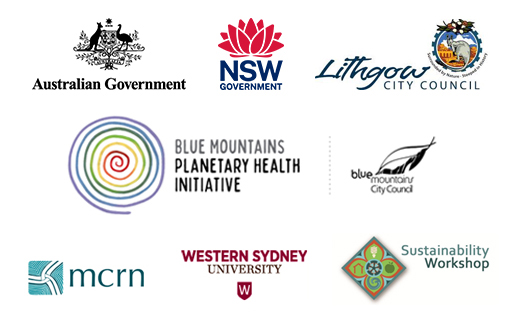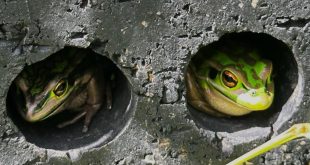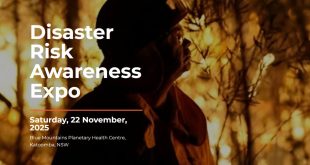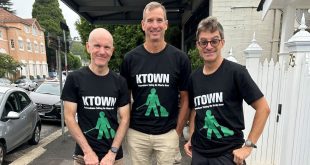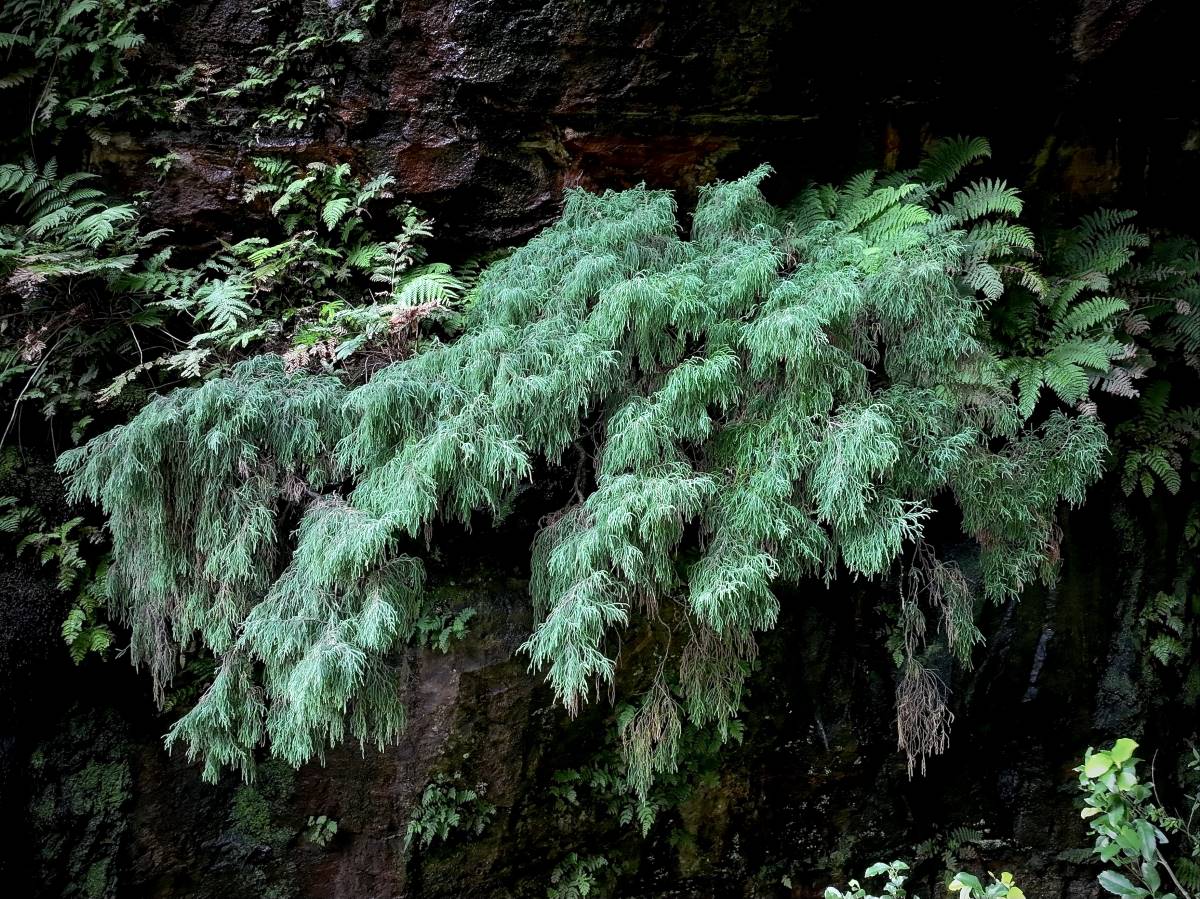
Little survivor. Hanging onto life in the rainforest. Pherosphaera fitzgeraldii, the Dwarf Mountain Pine. (Photo: Sarah Delaney)
Story by Linda Moon
Renewed efforts to save the Dwarf Mountain Pine – in light of its potential upgrade to ‘critically endangered’ status – are giving greater recognition to a rare and unusual prehistoric native in our midst.
Key Points:
- The Dwarf Mountain Pine is endangered with only about 750 plants left in the wild, according to the latest survey.
- The survivors are limited to waterfall spray and seepage zones in the southern escarpment between Katoomba and Wentworth Falls.
- A collaboration of local community, native plant nurseries, Blue Mountains City Council, the NSW National Parks and Wildlife Service and the Saving Our Species program is working to save the pine from extinction.
It takes almost an hour to reach the dim bottom of the falls – slithering down steel ladders, clambering across rocks, ankle-deep in muddy ferns. Sarah Delaney (an outdoor guide and Bushcare worker) and Ian Brown (a consultant conservationist), point upward to a low-growing, nondescript, blue-green plant hanging on the rock wall above us.
For decades, Ian, Richard Delaney and more recently, Sarah, have been caring for it.
Key to its survival (thus far), Pherosphaera fitzgeraldii is a recluse. Found clinging onto steep sandstone cliffs or within caves at the base, sides, ledges and seepage areas of south-facing waterfalls, the small conifer remains relatively unknown.
Significantly, this ancient, living fossil of the Gondwana age has made its final abode and outpost in the Katoomba to Wentworth Falls area. It is found nowhere else on Earth!
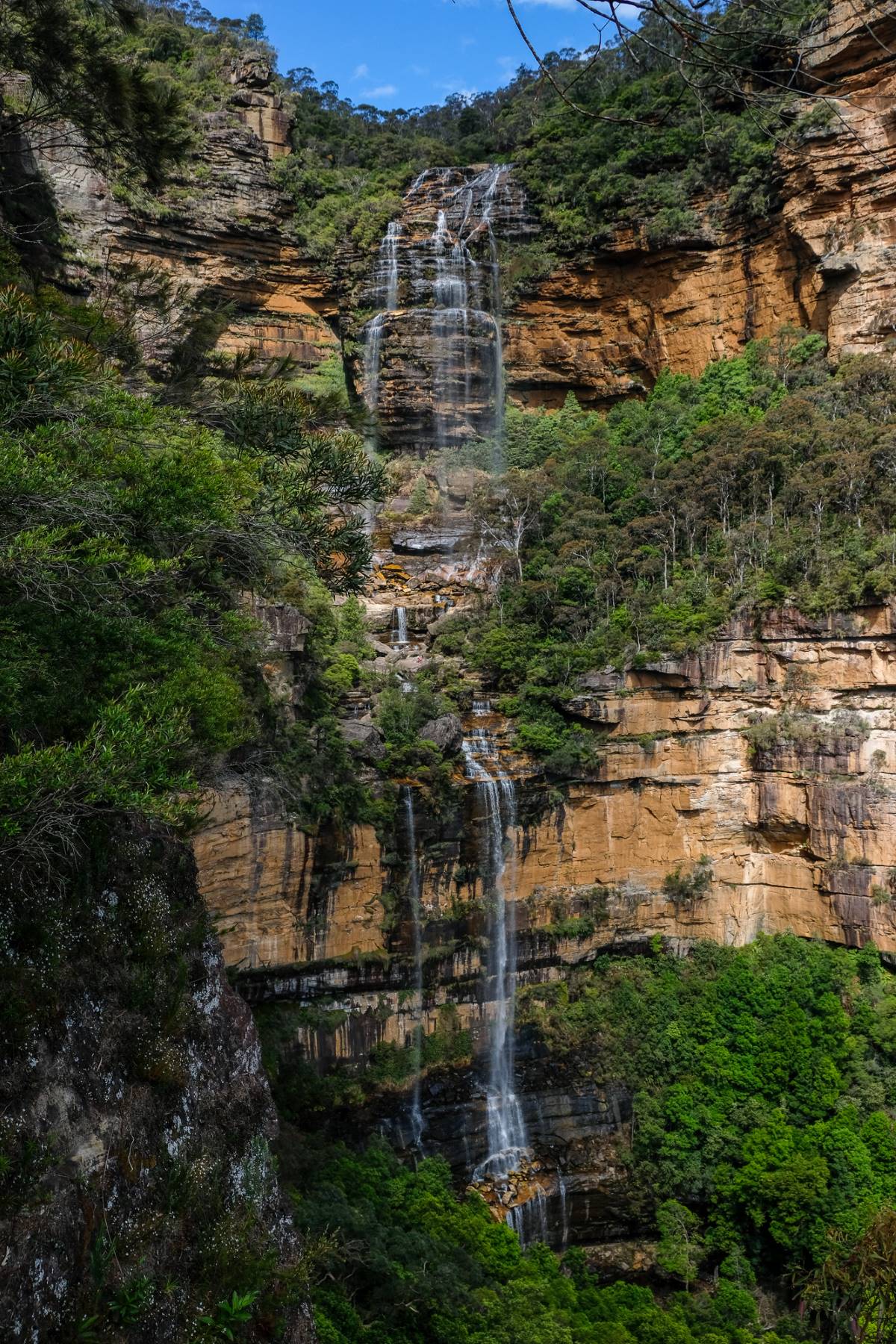
Habitat of the Dwarf Mountain Pine. Shelter, moisture, light and inaccessibility has helped the plant survive for millions of years. (Photo: Ian Brown)
Final refuge – the falls
According to their latest survey, the plant exists in 10 sites along the southern escarpment between Wentworth Falls and the Radiata Plateau area in Katoomba. Two sites are on land tenured by Blue Mountains City Council. The rest occur on land managed by the National Parks and Wildlife Service within the Blue Mountains National Park and Ngula Bulgarabang Regional Park.
In the high, damp, impregnable refuge of the ever-flowing falls it has found protection from intensifying fires and temperatures – one speculation for why the moisture-loving shrub has managed to survive here.
The plant grows where there’s a constant supply of ground moisture, Ian says. “Most of where it grows is behind patches of rainforest where fire hasn’t been able to get to the plants. But no one really knows exactly why it’s so restricted.”
The difficulty of the site means it’s less prone to competition. Another potential clue to its final location: it seems to like a fair bit of light exposure, Ian says.

Sarah Delaney and Ian Brown with the Dwarf Mountain Pine hanging on the sandstone cliff behind them. (Photo: Linda Moon)
Face to face with an ancient survivor
Sarah and Ian are protective of the little plant: keen for its exact whereabouts to remain a secret. But, many of us have probably gazed unknowingly at Pherosphaera fitzgeraldii at local waterfalls – like Wentworth, Bridal Veil and Leura Falls.
Horribly, risks to the survival of this ancient relic include trampling by bushwalkers and burning by fire regimes. It’s now written into fire plans through its classification as an Asset of Intergenerational Significance, Ian says.
Alongside the thunderous waterfall, the vertical groundcover is a pretty, blue-green haze. Up close, the small shrub has slender, drooping branchlets. While commonly smaller, it can grow up to three metres high and spread five metres across, Ian says.
A small, relic species of prehistoric landscapes, the plant elicits awe and protectiveness in those who’ve become involved with it. “It’s a bit straggly, but so unique and kind of beautiful in its own way,” Sarah says.
“It’s quite unusual in where it grows and its lifestyle and so on. It’s a fascinating plant, intellectually, and scientifically.” – Ian Brown.
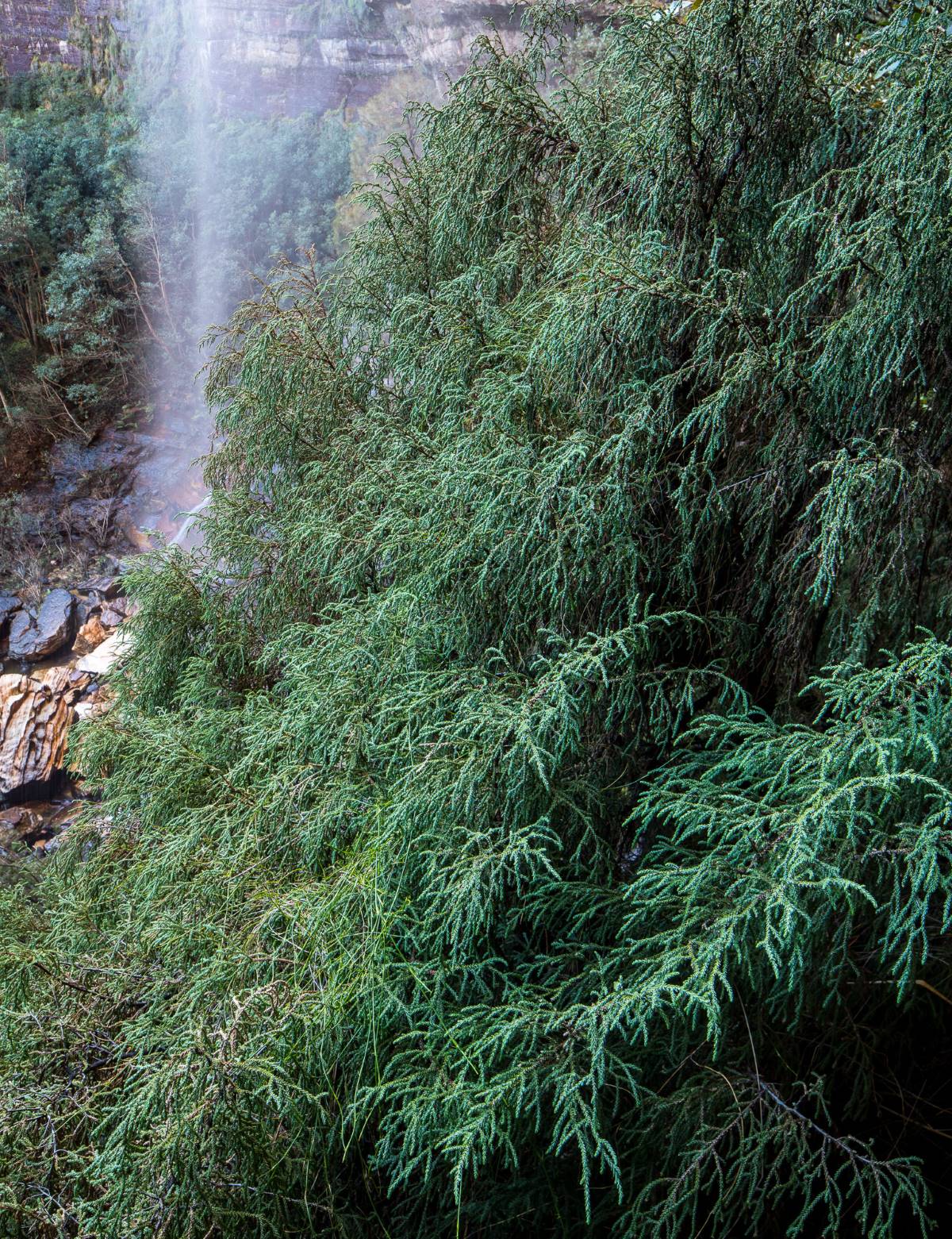
A large specimen photographed by Ian Brown. “They have quite a sprawling habit. Sometimes it’s hard to tell one plant from another,” he says.
Little cousin of the Wollemi Pine
Pherosphaera fitzgeraldii is a relative of the better known, larger Wollemi Pine (Wollemia nobilis) – one of the most significant and publicised botanical finds of the past century and Australia’s oldest, still existing tree species.
Worldwide, 34 per cent of all conifers are endangered, according to the IUCN Red List.
“Australia doesn’t have many conifers,” Ian says. He blames their restricted distribution on climate change since the ice ages and the drying out of Australia over millennia. “They’re threatened by us now,” he ponders. “That’s why we have to do something about it.”
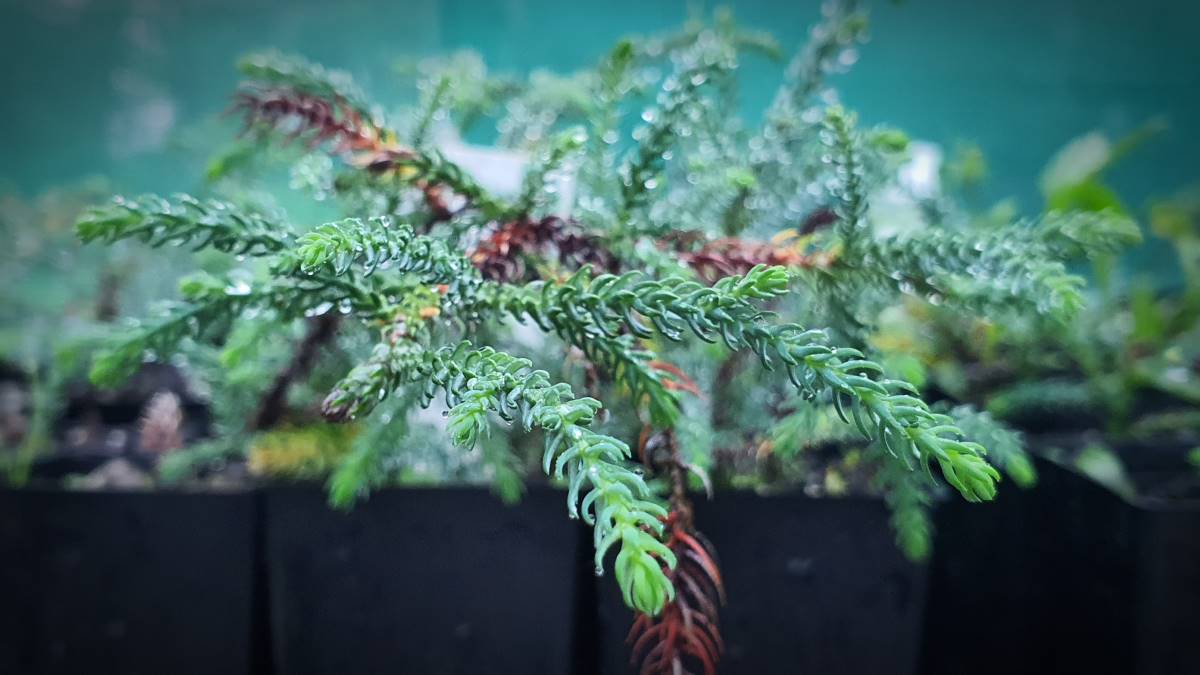
Tiny Dwarf Mountain Pines propagated by Blue Mountains Wildplant Rescue Service (Photo: Linda Moon).
Clinging onto life
According to Ian and Sarah, the pine is at risk due to its small, restricted and fragmented population. It’s also only one of two species within its genus (Pherosphaera). “It’s not just very rare, it’s also genetically distinct,” Ian says.
Another risk factor is the plant’s location, which makes it highly vulnerable to threats from human impacts, Sarah says. Penetrating the gush of the waterfall, people holler at the top of a lookout – a reminder of the interface between the plant, humans and the urban area.
Threats, according to the IUCN listing, include weeds, fire, water quality (which can transport chemicals, pollutants, sediment and the seeds of invasive weeds to the site), inappropriate fire regimes, climate change, and degradation of the pine’s habitat through erosion, sedimentation, visitors and even trail maintenance.
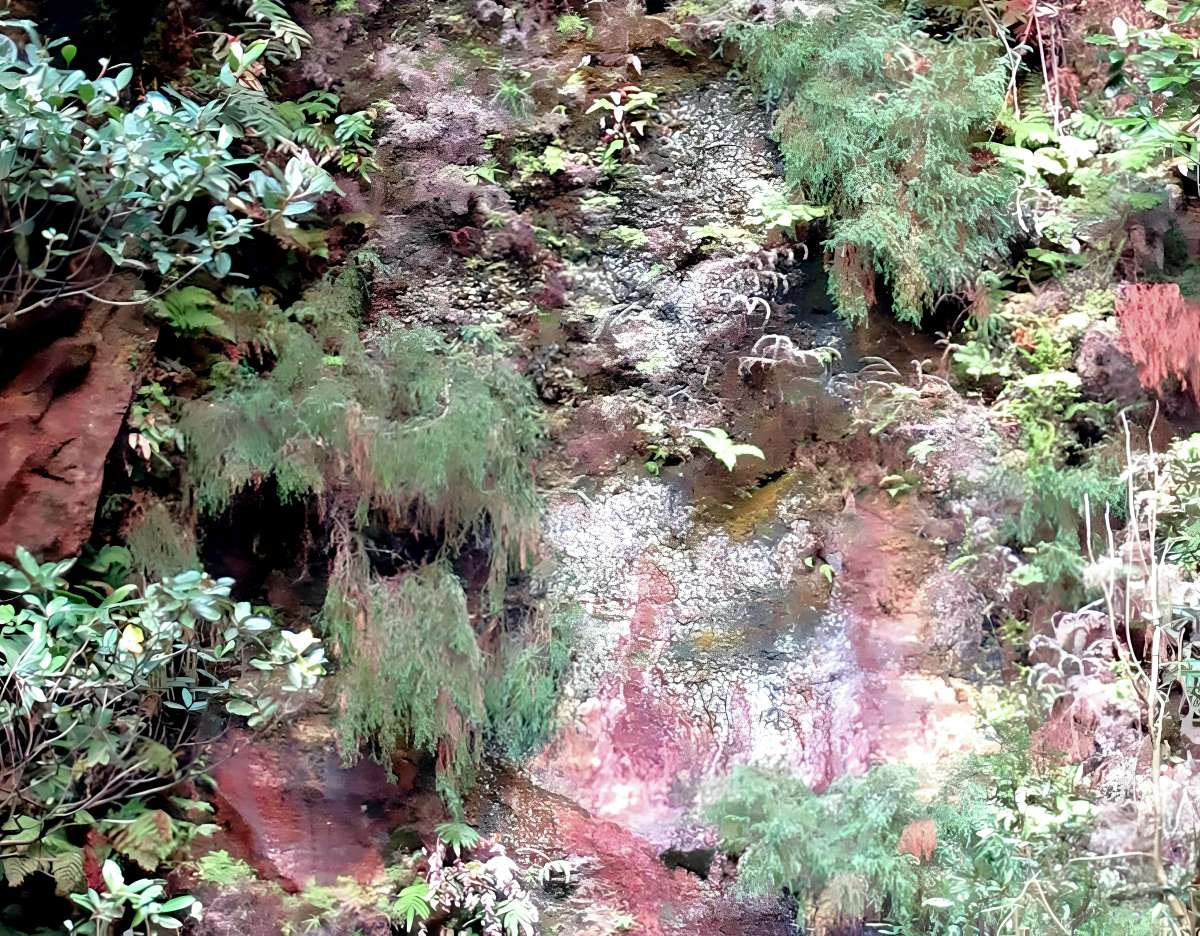
Pherosphaera fitzgeraldii plants hanging on to the cliff. “There’s probably not a lot of other things that would like living there,” Sarah says. (Photo: Linda Moon)
Living on the edge
Another one of the shrub’s problems is its precarious positioning. “Even the bigger plants, because of where they grow, they’ve often got very shallow rooting, like they’re just in a little crack or something. If they grow too big they just fall off,” Ian says. “Natural rock falls have taken out a few as well. It’s a dynamic environment.”
Ian worries that the growing tendency to extreme rain and flooding will have an impact, dislodging or weakening plants and disrupting their tenuous environment.
“The poor things have got a bunch of problems. We don’t need to add to them with human impacts.” – Ian Brown.
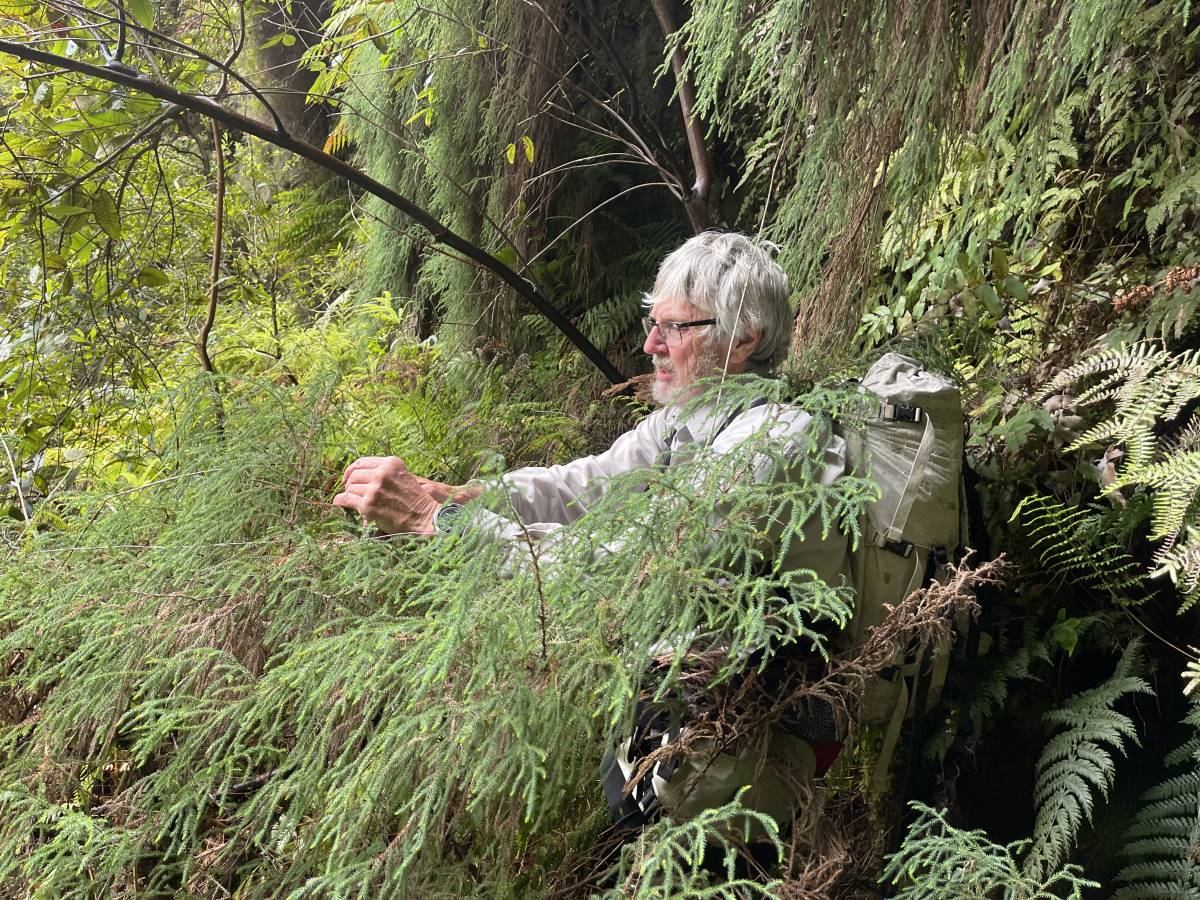
Ian Brown – with the Dwarf Mountain Pine – has been working with the ancient plant for decades. (Photo: Sarah Delaney)
Early conservation efforts
The Dwarf Mountain Pine was first discovered at Wentworth Falls, Ian says. It was first collected in the late 19th century by botanist Robert Fitzgerald.
Efforts to save it from extinction have involved multiple organisations and individuals including renowned ecologist Wyn Jones.
Ian originally got involved with the plant as a ranger in the area in the 1980s, working with Wyn Jones. “It was Wyn’s report that really shone the light on it, because it was the first one that counted and identified where the populations were,” Sarah says.
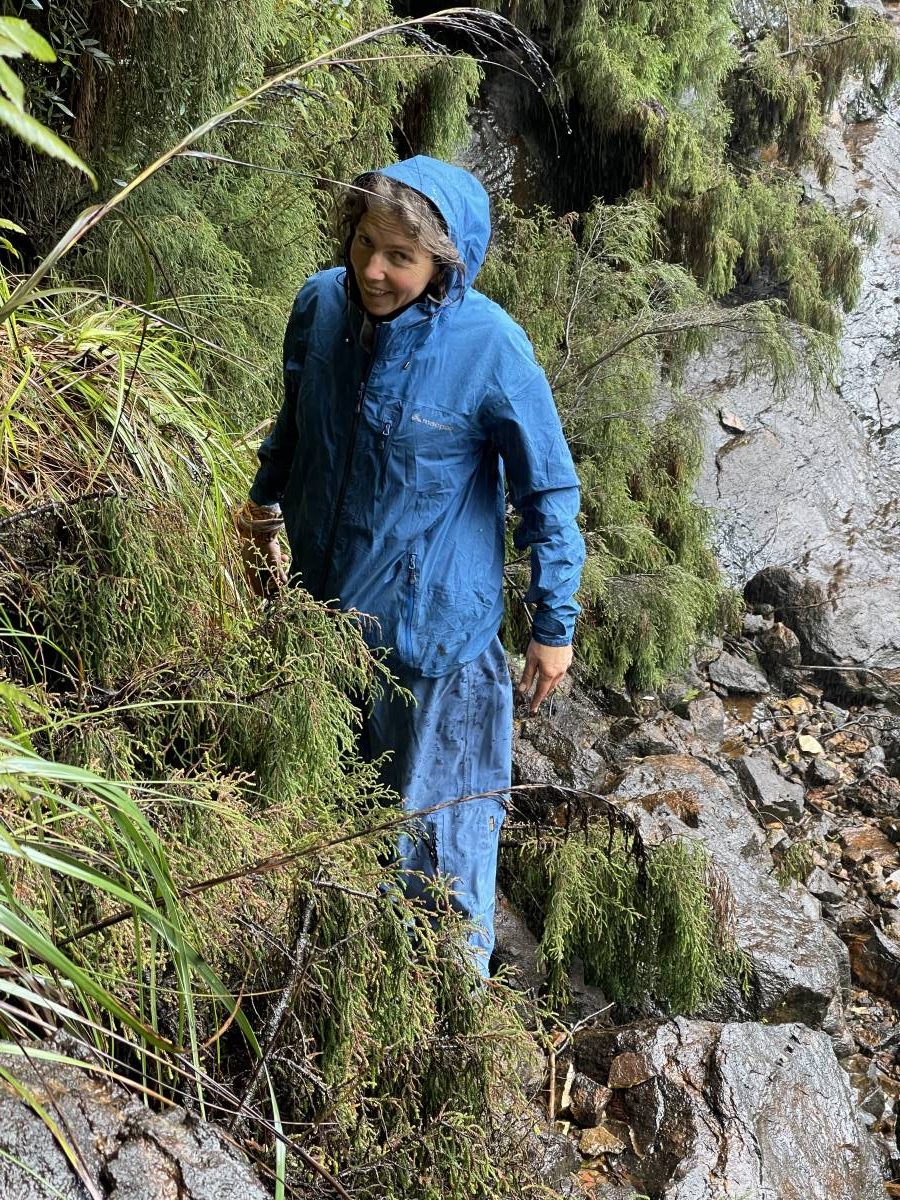
Guardian angel of the Dwarf Mountain Pine. Sarah Delaney battles the wet and cold to protect the endangered conifer. (Photo: Richard Delaney)
Guardians of the Dwarf Mountain Pine
Ian and Sarah have continued the work of surveying and monitoring the species. They also assess for threats. At one site on Narrow Neck, several plants were burnt during the Black Summer Bushfires, Ian recalls.
“It’s a really difficult plant to understand and study. Because of where they grow,” he says. People with abseiling and rope skills (like Sarah and husband Richard) are crucial to tagging and collecting samples and weeding out invasive species.
Excitingly, over the years, new plant sites have been discovered through targeting habitat the conifer favours. Ian once found a new site on his birthday.
“We’re losing so many species. These plants are rare things. They need a champion, people to care and notice and to watch and look after them.” – Sarah Delaney.
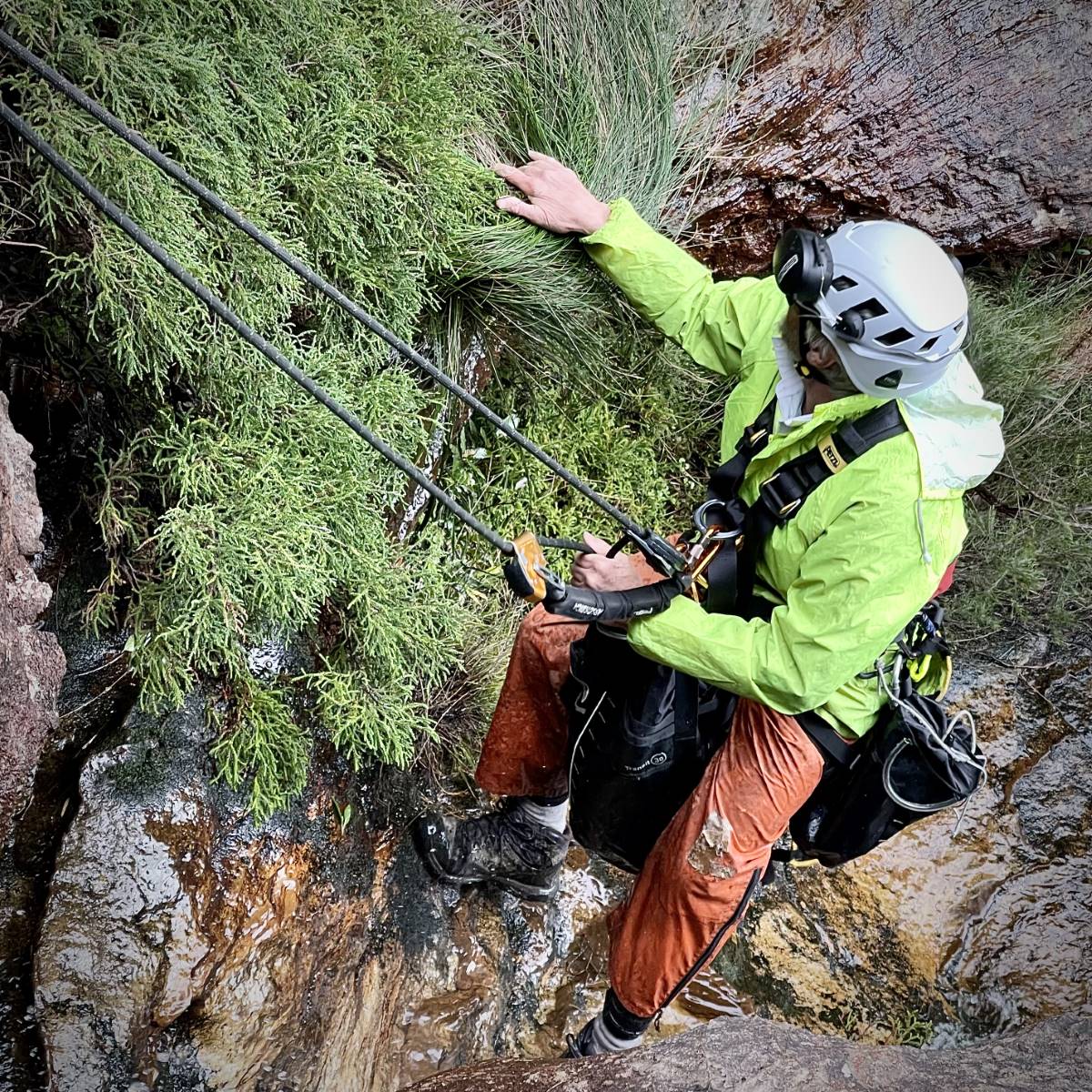
Ian Brown monitoring the plant. “Many of them are very inaccessible. And the footings are really awkward and slippery. It’s not a winter job,” he says. (Photo: Richard Delaney)
Scientific tests
More recently, they’ve been collecting specimens of the plants for genetic work and for pathology testing to try to get to the bottom of the cause of dieback at some sites.
“Genetic testing has confirmed what we suspected,” Sarah says. “It has low genetic diversity. When plants are restricted, when the populations are not big and they’re fragmented, you get a lot more inbreeding.” This makes them less resilient.
Sarah has been studying the enigma of how the plants reproduce. “We think a lot of it’s from broken pieces lodging somewhere where they can grow. Or a branch falling down and touching the ground,” she says. Conifers typically rely on wind to distribute male pollen (produced by the cones) to the female cones. This create the seeds. “We suspect that that’s not happening very much with these guys,” she says.
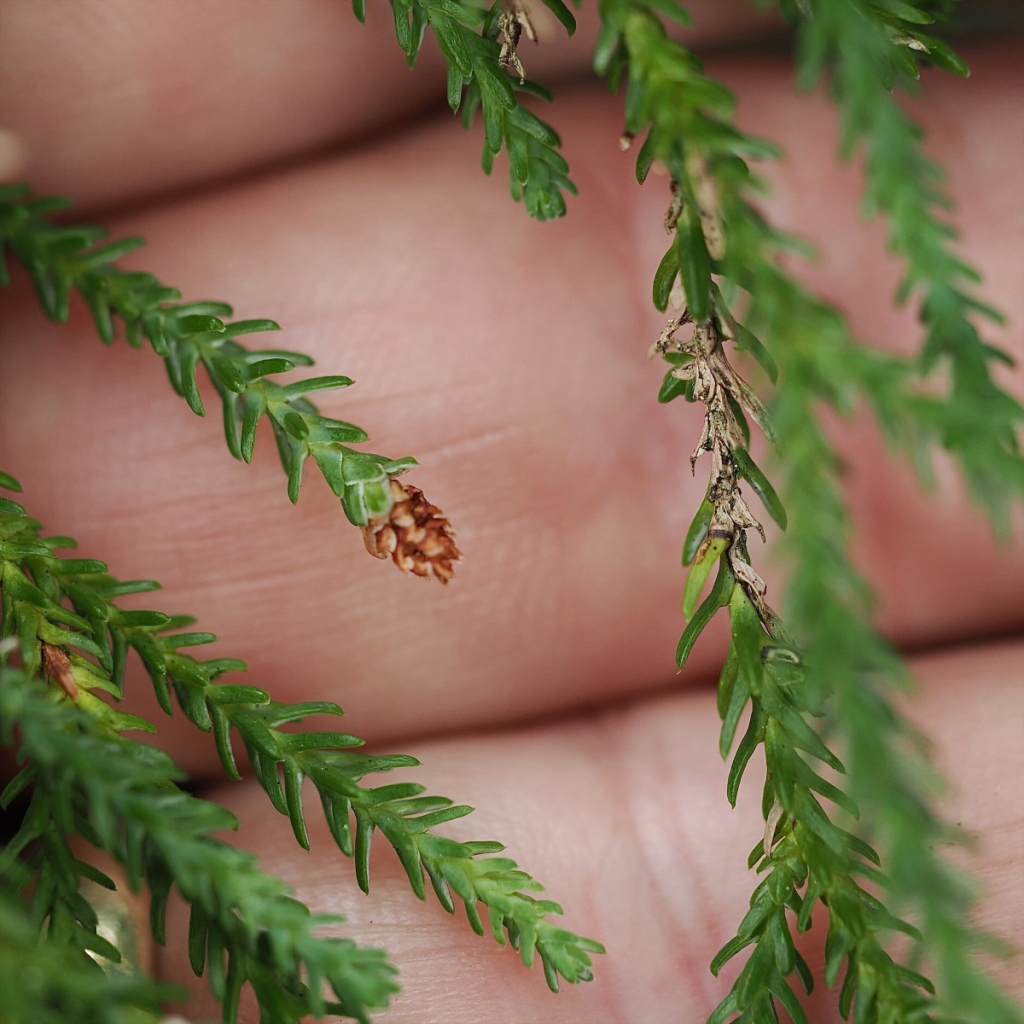
Close up of the branches bearing tiny cones. Sarah is trying to get to the bottom of how the plant reproduces. (Photo: Sarah Delaney)
Using drone technology
Drones have been invaluable in assisting with plant surveys, Sarah says. Along with making it easier to count plants and record photographic sampling from a particular point in time, it avoids the damage that can be incurred by scrambling boots and hands on an abseil.
Recently, using a drone, Richard discovered a new site of the rare plant. While there may be a few plants hidden in a few nooks and crannies here and there, there’s unlikely to be any major sites still to be found, Ian says.
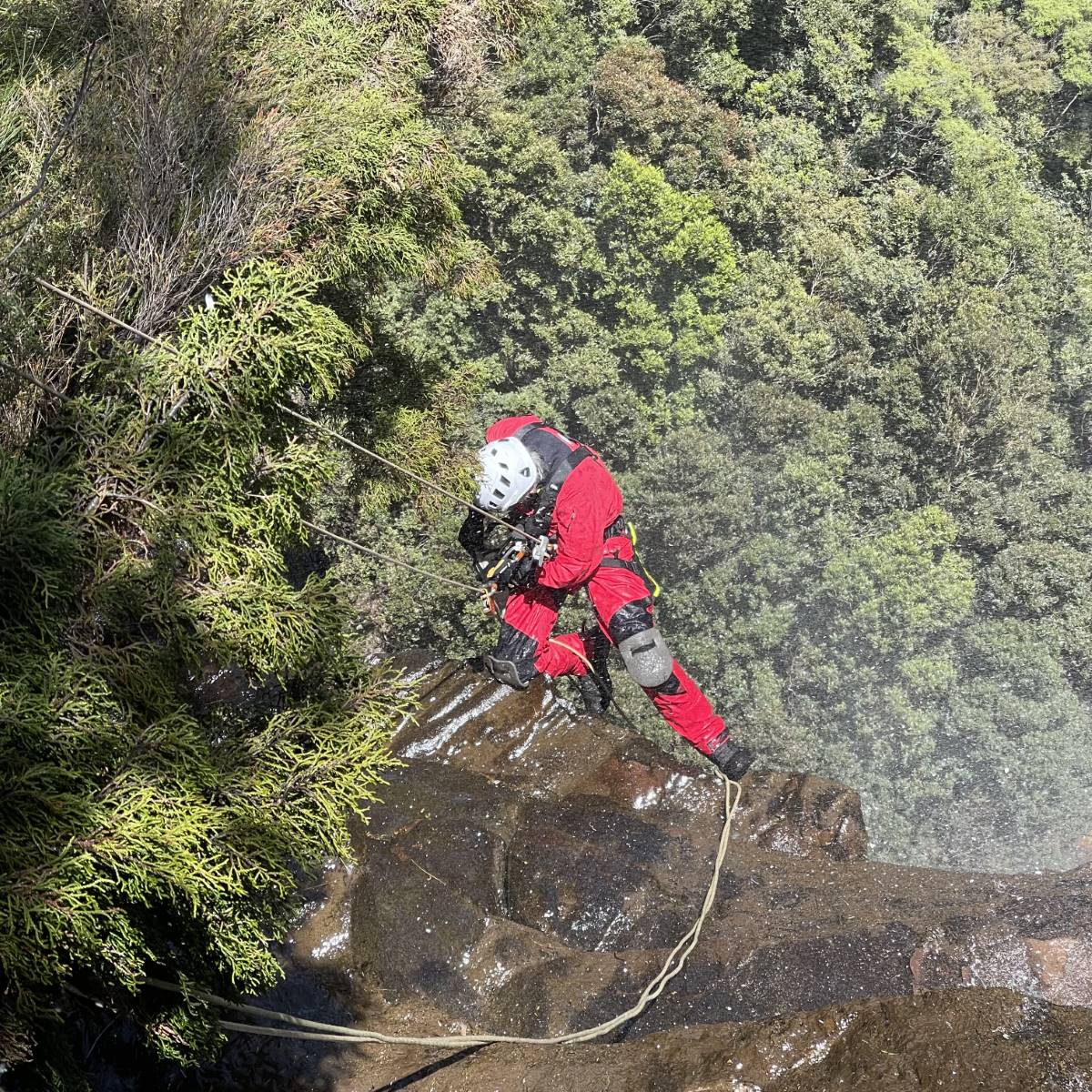
Monitoring, sampling and weeding the ancient plant requires hanging onto ropes and abseiling. Ian Brown in action. (Photo: Richard Delaney).
Healthier waterways
Monitoring has revealed major dieback and deterioration of the conifers at the Wentworth Falls, Leura Falls and Katoomba Falls locations – the sites most affected by urban catchments. As the plant exists only in waterways, monitoring and improving water quality has been a core focus.
According to Amy St Lawrence, Aquatic Systems Officer with the Healthy Waterways Team at Blue Mountains City Council, testing has shown contaminants – including pesticides, herbicides, fungicides, heavy metals, petroleum hydrocarbons, concrete leachate, sewage and excess nutrients – are making their way into local waterways.
Unfortunately, a lot of people don’t realise that what goes down the drain outside their home pours directly into the local waterways, including creeks, swamps and lakes. These feed the waterfalls.
To help promote ”water literacy”, the team have two part-time members specifically focused around educating the community about what they can do to protect waterway health. A major emphasis is on working with local schools.
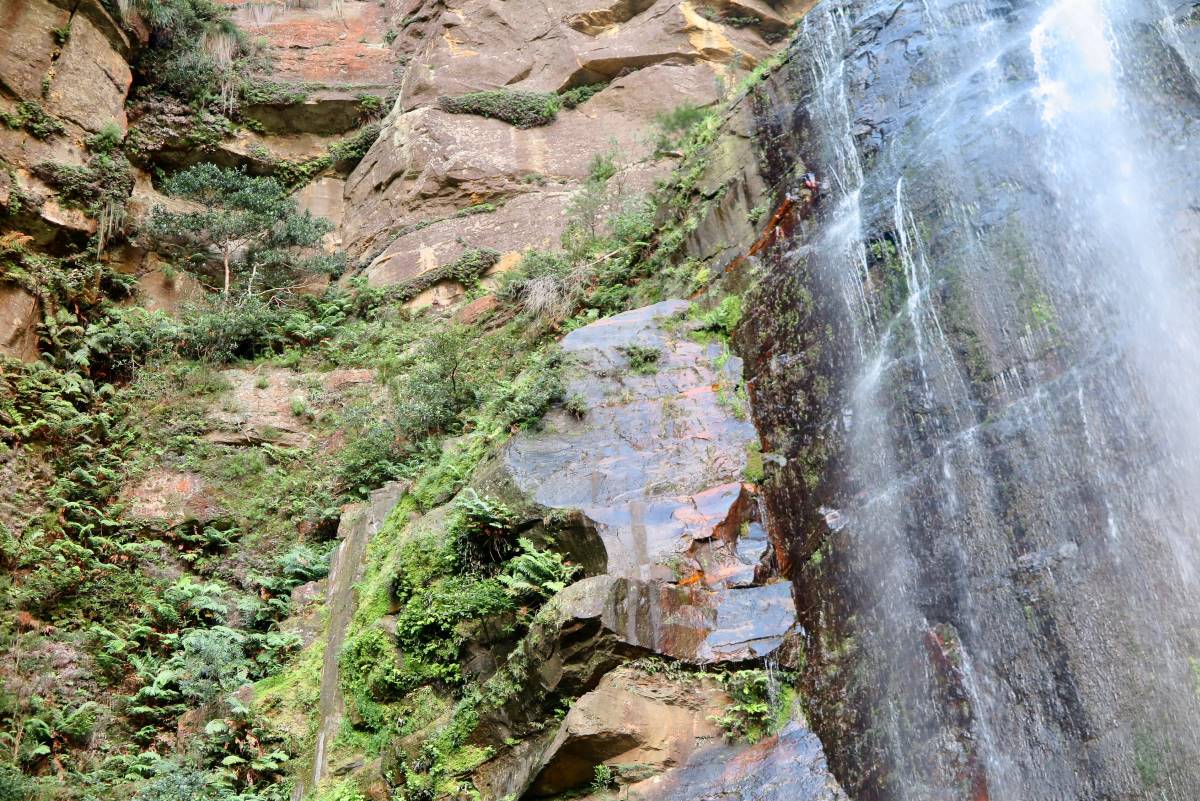
The Dwarf Mountain Pine in one of its final watery habitats. Cleaning up the water supply is a key target of action and involves all of us. (Photo: Linda Moon).
Other possibilities for the dieback, Amy says, include disease, algae, and the impacts of raging torrents caused by flooding.
As part of the Saving our Species Program the team will be working with State Government and university researchers to contribute to a comprehensive picture of water quality in the creeks.
Another strategy is retrofitting stormwater systems with rain gardens. The rain gardens act like bio filters that filter out many of the contaminants typically carried by stormwater, Amy explains. “They’re really effective at removing pollutants, fecal coliforms, nutrients and suspended solids,” she says. “But they can’t solve the problem by themselves. We need to look at the urban footprint and do as much as we can to manage runoff at the source.”
“The Dwarf Mountain Pine is just one reason why we protect our creeks, but there’s lots of other reasons too.” – Amy St Lawrence.
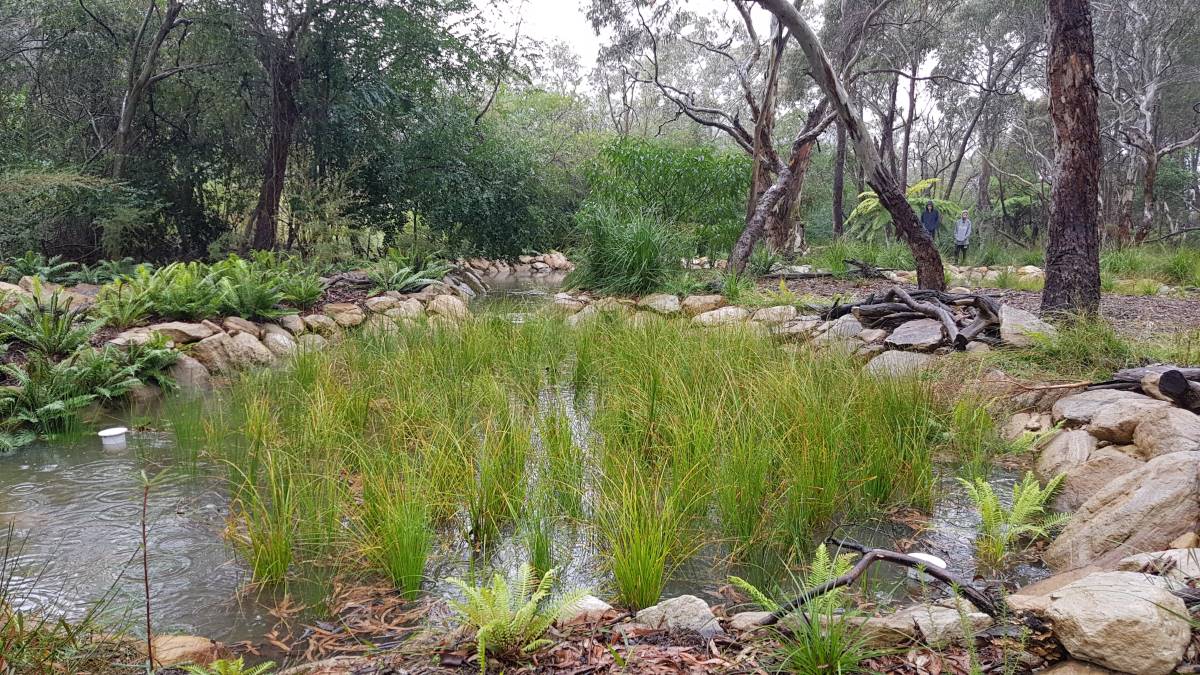
Rain garden systems built in the Wentworth Falls Lake/Jamison Creek catchment as part of a joint BMCC-Water NSW project. (Photo: Blue Mountains City Council).
Native nurseries to the rescue
Another thrust is collecting seed to grow an insurance population, Ian says. Some seeds will be sent to seed banks. Sarah has also been working with botanic gardens like Mount Tomah to propagate an off-site, insurance population.
The Blue Mountains Wildplant Rescue Service are also playing a part – through their native plant nursery and educational activities. The non-profit promotes and encourages gardeners to grow plants endemic to the Blue Mountains area.
Nursery co-ordinator, Ms Mclean, says growing the plant is an insurance policy against it becoming extinct.
Any tips for those who want to grow the Dwarf Mountain Pine?
Technically, the slow growing shrub doesn’t need a lot of soil, Ms Mclean says. “It likes shade and lots of water. It has a tendency to like its foliage being wet.”
“Its natural population could decline because it’s in such a small area. Anything, like a bushfire or even pollution spills from the highway or people’s houses, is potential for it be wiped out.” – Ms Mclean.

Ms Mclean at Wildplant Rescue Katoomba with healthy Dwarf Mountain Pine plants propagated from cuttings – is doing her bit to save the species. (Photo: Linda Moon)
Take Action:
- Harvest and reuse rainwater and stormwater (for things like flushing toilets, laundry and irrigation) before that water gets a chance to cause problems downstream, Amy says. (Connecting rainwater tanks to some of your household water supply means your tank has more capacity and less water flows into stormwater).
- Ensure nothing but rain goes down your street’s drain.
- Avoid pesticides, herbicides, fertilisers and chemicals.
- Avoid bare patches of dirt or concrete on your property. Permeable surfaces (like grass and garden beds) allow water to soak into the ground, Amy says.
- Know and eradicate invasive weed species, like Blackberry and Montbretia, in your garden. Read the Guide to Blue Mountains weeds.
- Join a local Bushcare group and help eradicate invasive weeds from the bush.
- Read about how rain gardens are constructed in the mountains. Create one on your own property.
- Grow the Dwarf Mountain Pine in your garden.
Share this article:
This story has been produced as part of a Bioregional Collaboration for Planetary Health and is supported by the Disaster Risk Reduction Fund (DRRF). The DRRF is jointly funded by the Australian and New South Wales governments.
